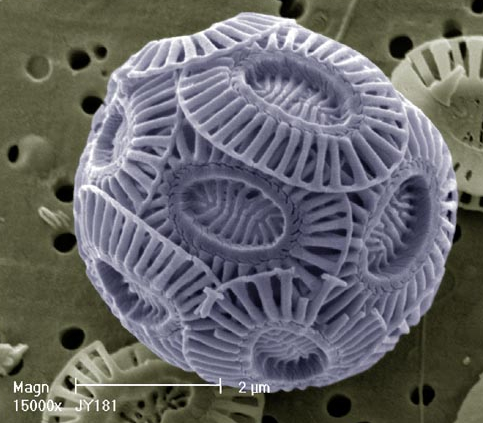AIChE 2012 Annual Meeting
Advisors: Professor Jifeng Liu, Dartmouth College and Professor Michael Strano, MIT
The extension of chloroplast lifetimes is an essential prerequisite for plant organelle-based photovoltaic devices and self-regenerating nanocomposite biomaterials. In order to combat photo-damage by reactive oxygen species (ROS), nanoparticles including single-walled carbon nanotubes (SWNT), fullerenol, and dextran nanoceria were added to isolated chloroplasts and monitored under illumination. SWNT were found to have little effect on ROS exposure or chloroplast health. Fullerenol scavenged ROS at low concentrations, but produced ROS by photo-generation pathways under intense illumination. Dextran nanoceria was not shown to have effects significantly different than free cerium(III) ion; both scavenged ROS under ambient light conditions but were overwhelmed by the photo-damage done under intense illumination. In addition to photo biofuel cells and self-regenerative materials, this research has implications for environmental contamination and medical research, as these nanoparticles are capable of interacting with living organisms and their components.
Nanoparticle Scavenging of ROS in Chloroplasts
Undergraduate Thesis; June 2012

Kato, Y.; Sakamoto, W. J Biochem 2009,
146, 463-469.
Biomineralization Review
CHEM 92 Inorganic Biochemistry; June 2012

http://protozoa.uga.edu/portal/
coccolithophores.html
Micro-syringe for Single-Cell Injections
ENGS 135 Thin Films and Microfabrication; March 2012

This project puts forth the design for a syringe system capable of injecting small volumes into a single cell. The problem of controlled, repeatable injection into biological cells is a difficult one, as it cannot be done manually and the tip size must be quite small in order to damage the cell. Recent strategies include an AFM-based “nano- fountain probe” and environmental scanning electron microscope (E-SEM) manipulation. However, both of these techniques require expensive machines not found in most labs, and the number of samples that can be produced this way is therefore quite limited. A MEMS device that could be operated under a simple optical microscope could greatly speed the process of single-cell injection for many samples.
Project List
- * Nanoparticle Scavenging of ROS
- Biomineralization Review
- * Micro-syringe Design
- COF-CNT Nanocomposite Proposal
- MAPLE Review
- 3D Micromachining Review
- * Photovoltaics for Space
- * Conducting Polyaniline Nanofibers
- * Translumenal Endoscopic Device
- Modeling Corn Stover Pyrolysis
- * Cos2 Kinesin Mutagenesis
- * Emissions from Two-Stroke Engines
- Note: * indicates hands-on lab or design experience














